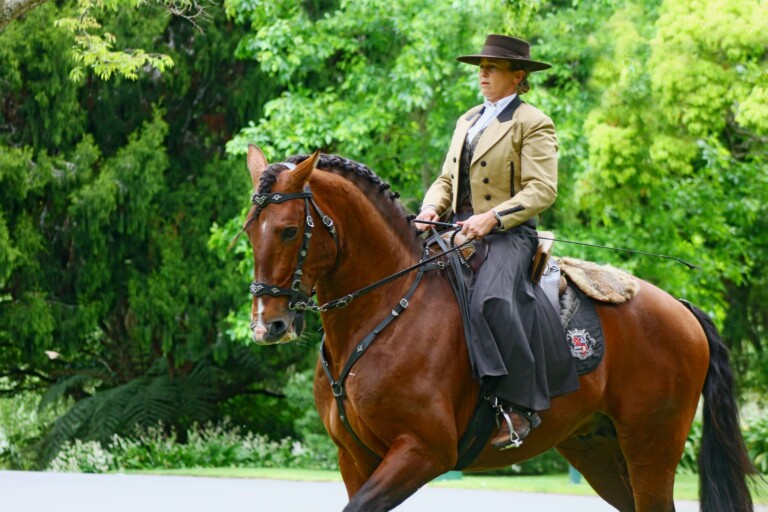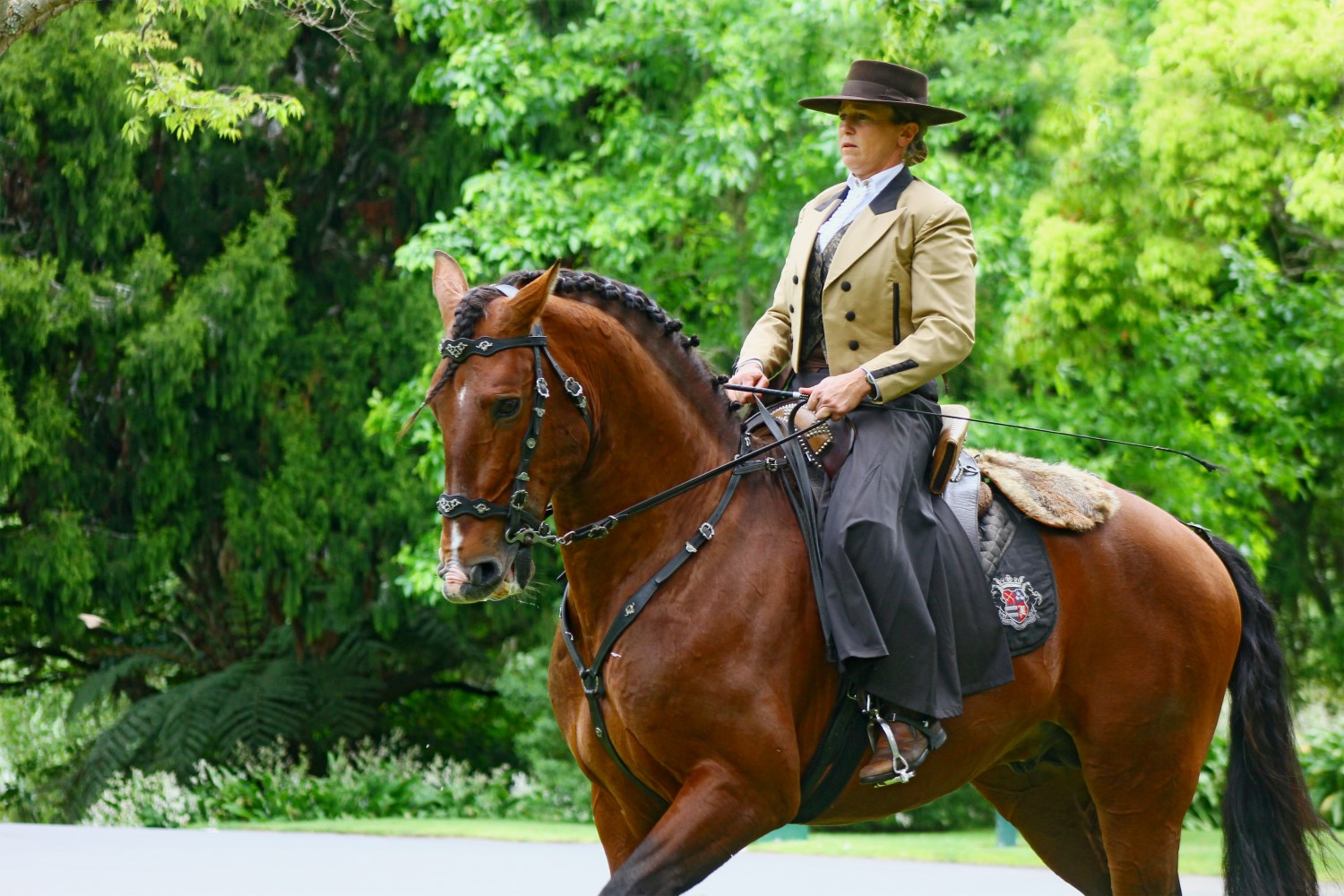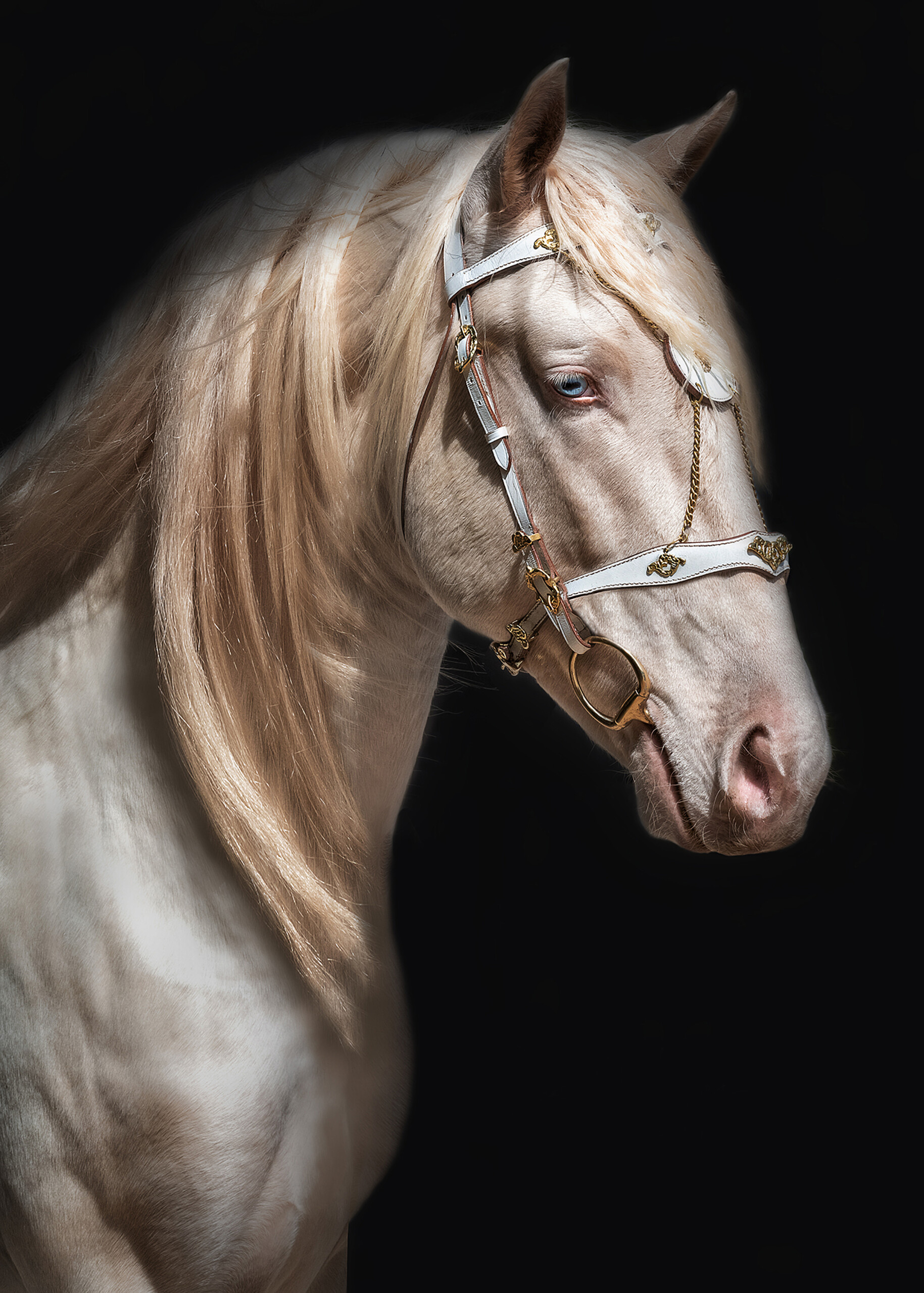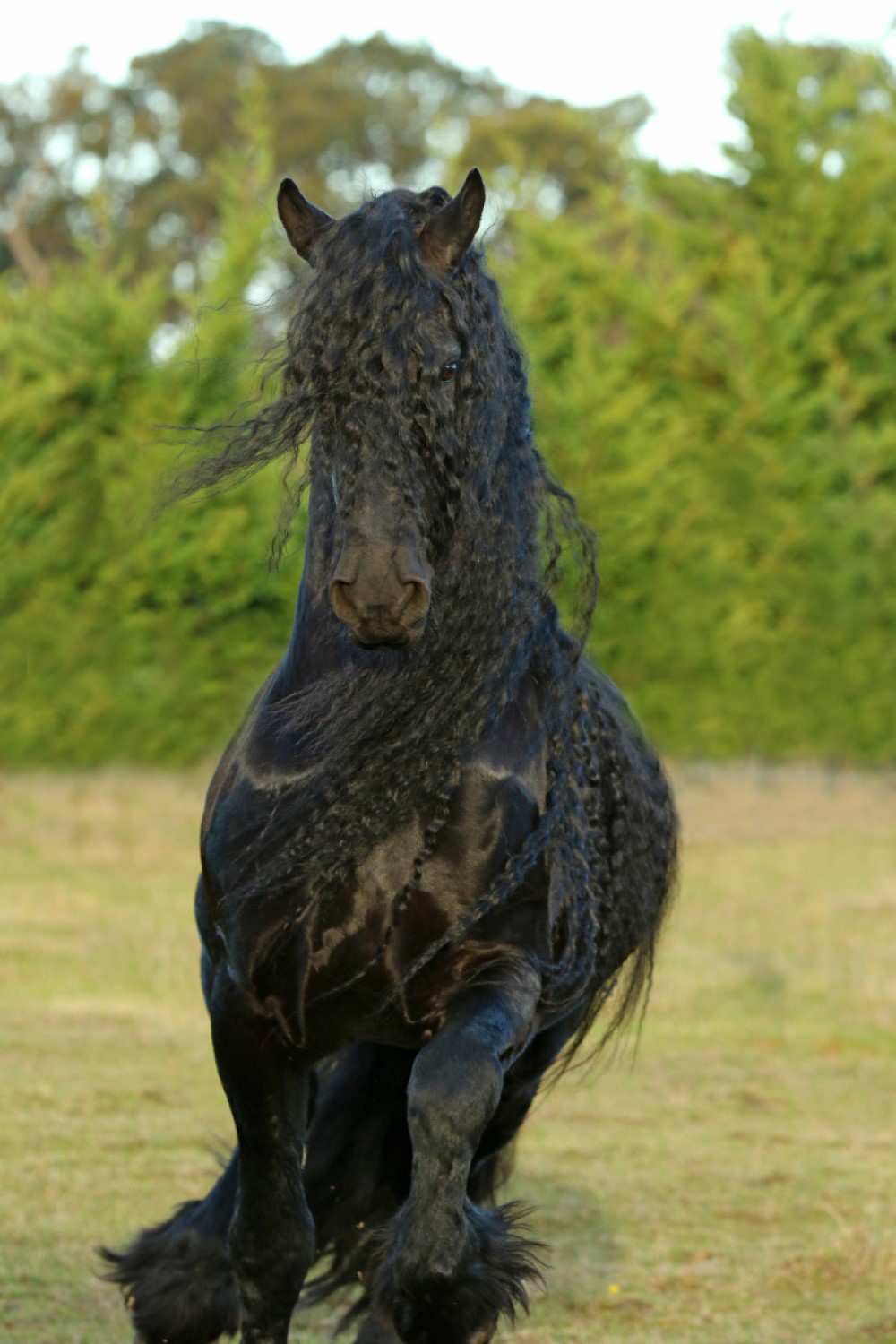If you’ve seen the 1989 cult classic Bill & Ted’s Excellent Adventure, you ll know that bodacious is a term meaning extreme excellence. But do you know what baroque means? Happily, CHRISTINE ARMISHAW does.
What is a Baroque Horse?
A baroque horse is one of a group of breeds that owe their characteristics to a particular type of horse that became popular during Europe’s Baroque period.
With their flowing manes and tails and extravagant leg action, they’ve been the darlings of the movie world for years: think Braveheart, Robin Hood, Merlin, and of course the magnificent horses who played Gandalf’s Shadowfax in Lord of the Rings. Many a scene in period movies includes fancy black Friesians or alluring grey Andalusians. But while their good looks and great hair makes for epic movie magic, there’s historical merit to why these specific breeds play feature roles.
The big four
During the Baroque period, from the late 16th century to the early 18th century, art and music became elaborate and grand, and horse riding evolved into an art form.
Selectively bred for centuries, the best known of these bodacious baroque beauties are Andalusians, Lusitanos, Lippizaners and Friesians, all of whom are characterised by a certain look: strong bodies, powerful hindquarters, flowing tails, convex to Roman noses, and arched necks adorned with luxurious manes.
They also sported a natural exuberance that could be easily shaped under saddle and had an aptitude for performing haute école classical dressage movements, including the capriole, levade and mezair, sometimes referred to as Airs Above the Ground. During this era, watching these great steeds dance a ballet was the entertainment of choice for a royal court.
Smooth moves and ravishing good looks were not the only baroque calling cards. These majestic equines were also selected for their intelligence, strength and stamina. Often used as war horses, charging into battle took a certain level of courage. War horses had to be brave, bold and fearless, all traits the baroque breeds are still known for today.
There are also less commonly known baroque types, including the Frederiksborger, Ginetta, Kladruber, MenorquÃn and Murgese, but here we will delve into the big four and discover how these classical creatures came to be.
Andalusian (PRE)
Originating in the Spanish province of Andalucia, Andalusians are descendants of the Iberian war horses of Spain and Portugal. The Spanish now refer to their horses as Pura Raza Espanola (Pure Spanish Horse or PRE). Much of the rest of the world refer to them as Andalusian. However, the Andalusian Horse Association of Australia’s studbook also titles them PRE.
An animal of great beauty, they range in height from 15.2 to 16.2hh. Viewed in profile, the Andalusian or PRE displays a body made up of curves. The head features a large kind eye, a straight or slightly convex nose, a broad forehead, and well-placed ears. The arched neck and well-defined withers lead to a short, strong back, rounded off with powerful hindquarters. The thick tail is set low and matches the silky mane. No feather is found on the legs. Most are white or various shades of grey, with some bay or brown, and a handful of black, chestnut, dun or palomino. Today there are no broken colours, although in the early history of the breed spotted horses were accepted.
Typically calm in temperament, these proud Spanish horses are sensitive and particularly intelligent, responsive and cooperative, learning quickly and easily when treated with respect and care. They show expressive and high knee action and, as riding horses, are particularly suited to collection. They have a great aptitude for haute école movements, including the passage, piaffe and Spanish walk.
Lusitano
The name Lusitano comes from Lusitania, the ancient Roman name for Portugal. This breed also shares Iberian war horse ancestry, dating back to when Spain and Portugal were joined under the Iberian Union. However, the Portuguese Lusitano and the Spanish Andalusian became independently recognised breeds after the two countries went their separate ways.
The special traits of the Iberian war horses can still be seen in their Lusitano descendants. In modern Portugal the Lusitano shines in the bullring, where they are required to be bold and courageous. The role they play in bullfighting is perhaps one of the most important factors in their breeding and selection process. While their job description does not require them to be as calm or docile as an Andalusian, they are still kind, willing and generous, and are noted for their intelligence.
Noble rather than pretty, the head has a pronounced jaw, slightly convex nose, an almond-shaped eye and small ears that curve slightly inwards at the tip. The Lusitano has a deep chest, a powerful neck and sloping shoulder which makes them look extremely majestic in front. While still round in appearance, the quarters are not large, but the loins are wide and strong and the hocks long. Well-developed gaskins and longer than usual cannons and pasterns allow for deep flexion and make for an extremely powerful horse. The predominant colours in the Lusitano are grey, bay and chestnut. The average height range is 15.2 to 15.3hh.
Lipizzaner
The Lipizzaner (or Lipizzan) horse is named after the Austrian imperial stud at Lipizza, near Trieste, Italy. The breed was first developed in the 1500s by crossing the best imported Spanish horses with local Karst horses. Tradition is strong in this breed, even down to how the horses are named. The colts have two-part names. The first part is that of their sire’s foundation stallion line, one of the eight original stallions, and the second is their dam’s name. In the case of foals from the same parents, Roman numerals are added to the name for differentiation. Filly names are shorter and usually end in a , reflecting the Italian heritage of the breed.
Lipizzaners are of comparatively small stature, averaging 15 to 16.1hh. Another noble breed with a convex or Roman nose, they have a large jowl and attractive, expressive eyes. These horses tend to have short, cresty necks, a long back, a well-muscled body and very powerful hindquarters. Adult Lipizzaners are nearly always grey, but are actually born black or bay, slowly turning white or grey between the ages of five and ten. A bay or black adult horse is a rarity and is considered to be a good luck symbol. Slow to mature, they are long lived, often reaching 30 years or more. Lipizzaners are mentally tough, one-person horses. Once they bond with their person, they are trusting, understanding and have a serious work ethic.
The Lipizzaner’s reputation for excellence in dressage spans the history of the breed, and they are globally renowned for their amazing Airs Above the Ground. Originally used in battle, the spectacular levade, courbette, capriole and other awe-inspiring movements performed by these horses are synonymous with the famous Spanish Riding School of Vienna.
Friesian
Originating in Friesland in the Netherlands, the Friesian horse owes much of its heritage to monks, who in the Middle Ages were renowned for their horse breeding. Andalusian blood has given the breed its characteristic high knee action and craning neck. An excellent trotter, in their homeland the Friesian was used for racing short distances, with golden or silver whips awarded to the winners. Throughout the rest of Europe, matching pairs made for stunning carriage horses.
Friesian Horses are always black, and white markings of any kind are unacceptable. They stand between 15 to 17hh, with an average height of 15.3h. Blessed with lustrous Andalusian locks, Friesians have long, thick, flowing manes and tails. Unlike Andalusians, they have the hallmark leg feather the breed is known for, and trimming any hair from mane, tail or legs is frowned upon.
The body is strong, with a deep chest and sloping shoulder. The hindquarters are robust and powerful. Knights in shining armour from times gone by found this horse very desirable, having the strength to carry great weight into battle while still being able manoeuvre quickly. Indeed, the Friesian was mentioned by Julius Caesar and known during the Middle Ages as a solid war-horse.
It’s a wrap
No longer required to use their incredible moves in combat, nor charge forth at the enemy, the wonderful traits that make these baroque heroes so unique are nonetheless preserved and cherished by enthusiasts the world over. Often seen performing classical dressage, a baroque horse makes a wonderful, hardworking partner. If chiselled features, intelligence and quiet strength are what you look for in a horse, then a baroque movie star type may be just the horse for you.








